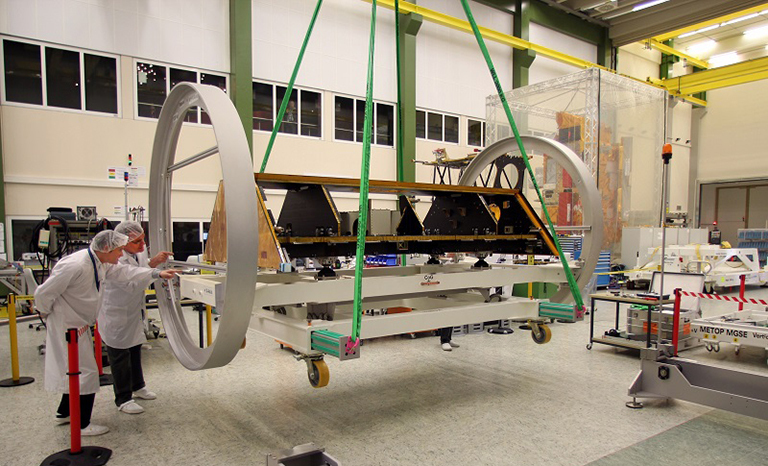News | May 27, 2015
Airbus Defence and Space begins GRACE-FO Satellite Build

Airbus Defence and Space, the world’s second-largest space company, has successfully completed the development and design phase of the GRACE-FO (Gravity Recovery and Climate Experiment Follow-On) satellites. Following delivery of the highly stable satellite structures, the building phase of the two NASA Jet Propulsion Laboratory research satellites has begun. The GRACE-FO mission is based on an U.S.-German cooperation agreement executed by JPL and the German Research Centre for Geosciences (GFZ-Potsdam).
Planned to be launched by 2018, the GRACE -FO twin satellites will take measurements to provide an updated model of the Earth’s gravitational field every 30 days, for a five-year mission duration. In addition, each of the satellites will create up to 200 daily profiles of the temperature distribution and the water vapour content in the atmosphere and the ionosphere.
The satellites will circle the Earth in the same polar orbit, spaced 137 feet away from each other at an altitude of roughly 310 miles. Both satellites will take continuous, very precise measurements of the distance between each other. Since this distance changes under the influence of the Earth’s gravity, this enables the gravitational field to be continuously measured.
GPS receivers are used to determine the position of the satellites and the precise distance measurements between both Grace-FO satellites are made with a satellite-to-satellite microwave connection to give an extraordinarily high precision in the measurements results in the range of a few thousandths of a millimeter. Unlike the original Grace mission, the new satellites will additionally be able to carry out high-precision distance measurements by laser – a joint German/American technological experiment developed for future generations of gravitational research satellites.
The GRACE-FO satellites will follow-on the GRACE satellites, also built by Airbus Defence and Space, which have been making a significant contribution to global climate research since 2002. By observing changes in the Earth's gravitational field over time, geoscientists have been able to make new discoveries about dynamic processes beneath the Earth’s surface, about deep and surface currents in the oceans and about the changes in the ice coverage at the poles, in Greenland and on mountains. During the original GRACE mission, observations were made to determine which masses – in the form of water, ice and water vapor – were moving, and even the ground water level could be monitored globally and long-term.



